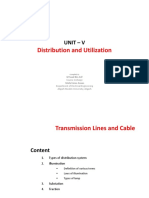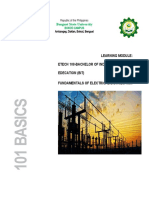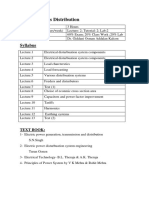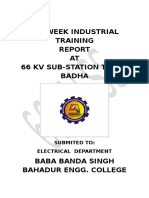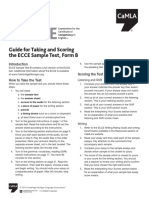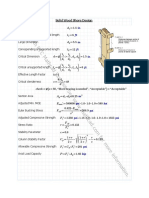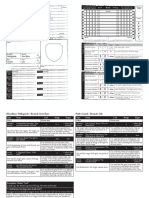0% found this document useful (0 votes)
83 views49 pagesDistribution Systems & Substations
The document discusses different aspects of electrical distribution systems including radial systems, ring systems, and bus bar arrangements. A radial system supplies power from one direction, so if the feeder or transformer fails the consumers have no power until repaired. A ring system connects transformers in parallel so if one fails power can still be supplied through others. A mixture of radial and ring is also used. The document also covers distribution substations, their indoor vs outdoor setups, functions of bus bars, and types of bus bar arrangements like single, dual and ring configurations.
Uploaded by
Muhammad ZakiyCopyright
© © All Rights Reserved
We take content rights seriously. If you suspect this is your content, claim it here.
Available Formats
Download as PDF, TXT or read online on Scribd
0% found this document useful (0 votes)
83 views49 pagesDistribution Systems & Substations
The document discusses different aspects of electrical distribution systems including radial systems, ring systems, and bus bar arrangements. A radial system supplies power from one direction, so if the feeder or transformer fails the consumers have no power until repaired. A ring system connects transformers in parallel so if one fails power can still be supplied through others. A mixture of radial and ring is also used. The document also covers distribution substations, their indoor vs outdoor setups, functions of bus bars, and types of bus bar arrangements like single, dual and ring configurations.
Uploaded by
Muhammad ZakiyCopyright
© © All Rights Reserved
We take content rights seriously. If you suspect this is your content, claim it here.
Available Formats
Download as PDF, TXT or read online on Scribd
/ 49





















